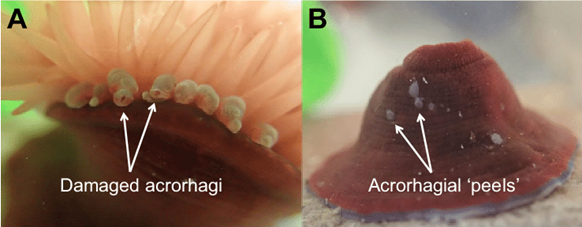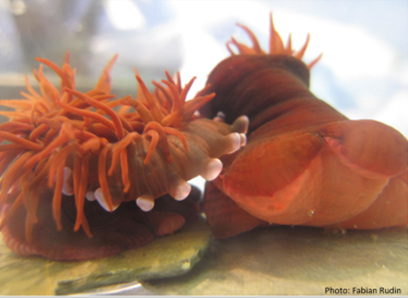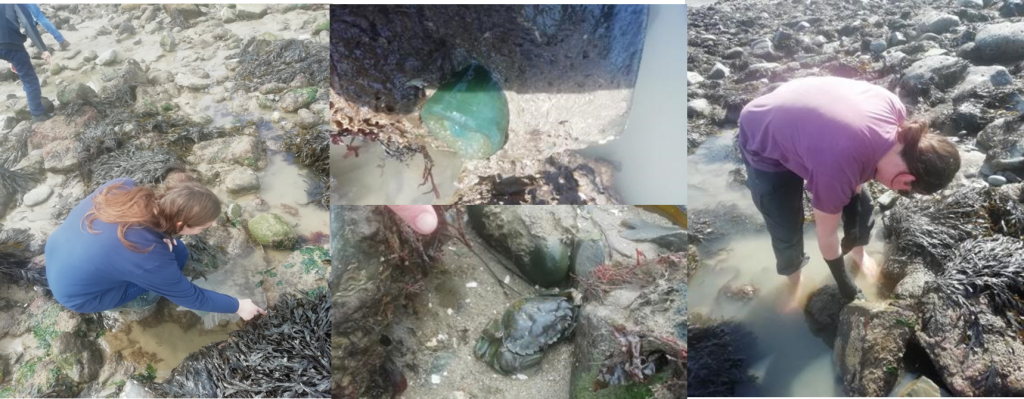Could you ever have imagined that those red, jelly blobs that rest in the rocky shores of our coasts are actually dueling? When you picture the top most brutal marine animal fights, I suspect that sea anemones were not apart of that! Well here you are…
Savvy fighers
Beadlet anemones (Actinia equina) engage in “battles” over the ownership of space and food on substrates. During one of these fights, one anemone will elongate their body and inflate a blue blob, known as “acrorhagi” (at the base of the tentacles) and then slam their bodies down on their opponent. The acrorhagi are stinging cells, where a piece will rip off and stick to the recipient, injecting toxins and causing tissue damage to not only their opponent, but potentially themselves. These toxins leave distinct blue markings called “acrorhagial peels” on the attacked anemone.

Do anemones feel these stings?
Nociception is the process whereby the body reacts to a stimulus e.g. moving your hand away from a hot candle. Anemones do not have a spinal cord and brain like humans and, therefore, they rely entirely on their surroundings. Often, during a fight when an anemone has been stung by another anemone, they will retract their tentacles, indicating that they have lost their fight and space on the rocks. A question researchers have asked is how anemones know when to retract their tentacles, do they feel the pain and experience nociception and know they have lost the fight? It is thought that the winning anemone tends to be the anemone that is bigger and stronger and depends on how well they react to their surrounding environmental conditions.
Join us for a rockpool safari!
Sea Watch Foundation hosts regular rockpool safaris at Dolau Beach. If you’re in New Quay make sure to come via our Dolphin Hub (yellow building in the bottom car park) to find out when our next rockpool event is.
In the mean time, next time you are down by the rockpools take another look at how two anemones are positioned next to each other and if you can spot any “acrorhagial peels”! Our intern, Lucy, has made a poster on how to rockpool safely and correctly to cause minimal harm to the wildlife. Check it out here.
Katherine McGregor Education and Outreach Assistant



























